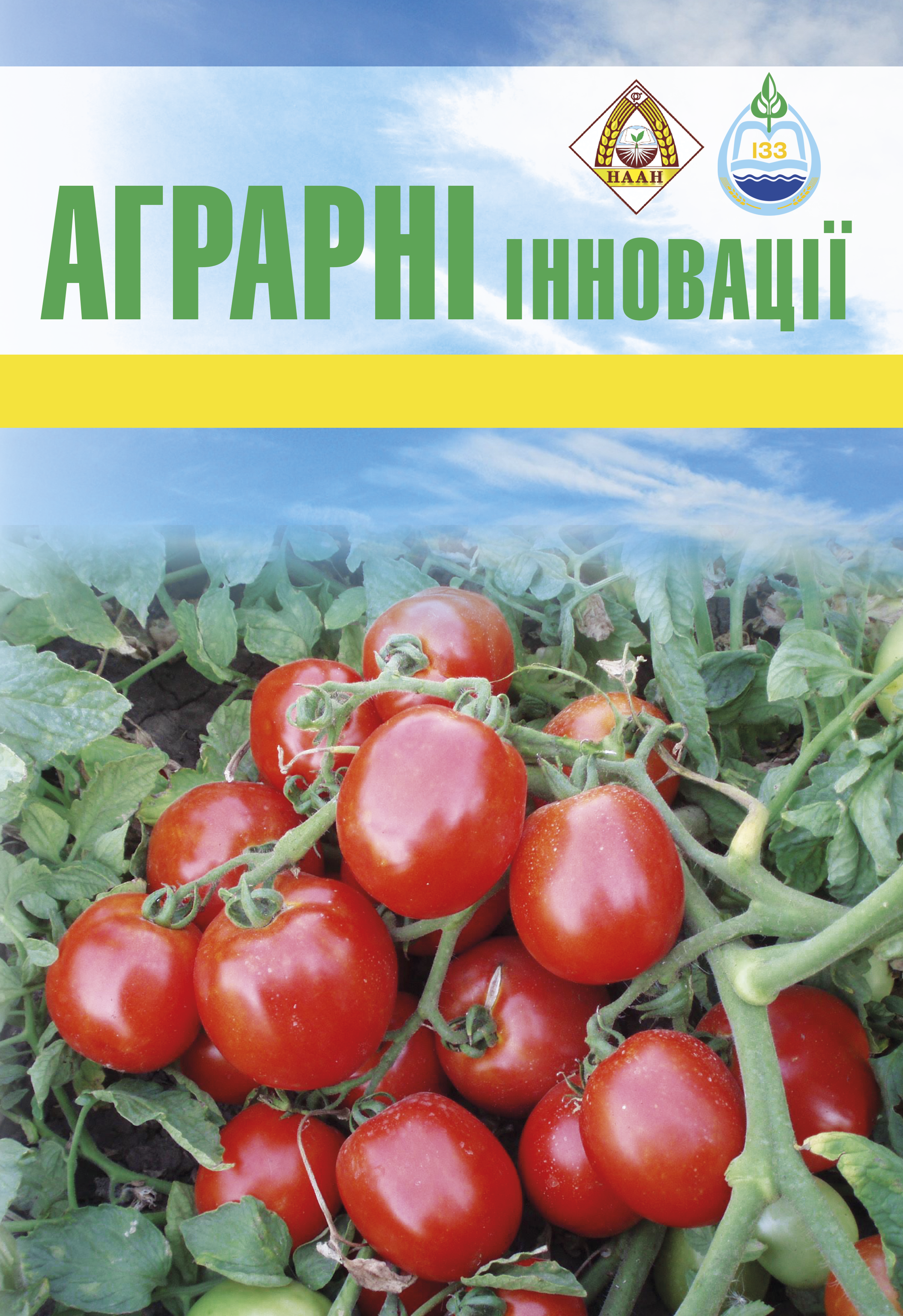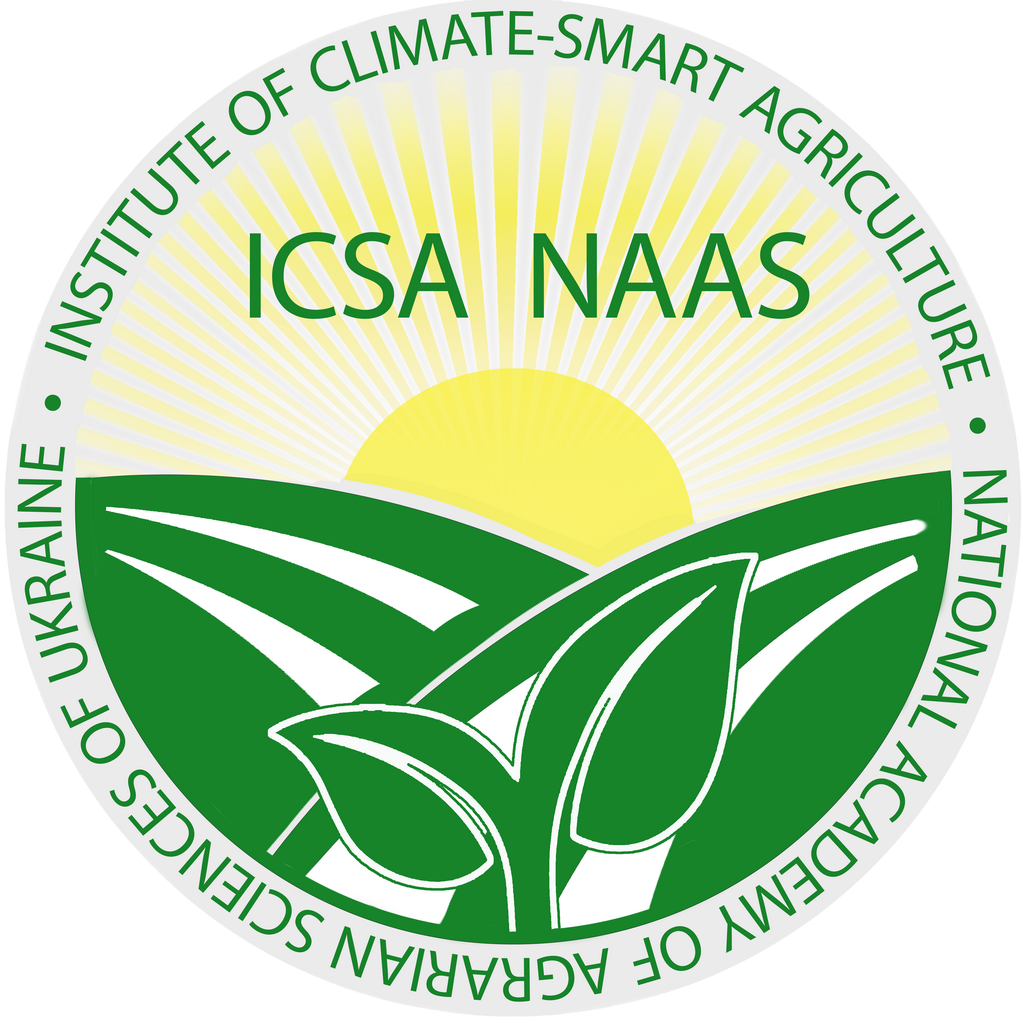The influence of fertilization background and row spacing on the main stem length and yield of table pumpkin varieties in the South of Ukraine
Abstract
Purpose тhe aim of the study was to determine the mainstem length and yield of table pumpkin varieties dependingon fertilization background and row spacing. Methods.Field experiments were conducted during 2017–2019under the conditions of Dolynske LLC Trading House,Chaplynka District, Kherson Region. The experiment waslaid out in four replications. Standard methodologies wereused during the establishment and conduction of the experiment,as well as for phenological observations and biometricmeasurements. Agricultural practices were carriedout in accordance with recommendations for growing tablepumpkin in the conditions of Southern Ukraine, except forthe studied factors. Results. The results of the experiments,averaged over three years of research, showed thatthe growth of the main stem of table pumpkin is influencedby varietal characteristics, fertilizers, and row spacing. Inthe seedling stage, without the use of mineral fertilizers,the main stem length was 23–29 cm for the Janina variety,24–30 cm for Doly, and 23–29 cm for Rodzynka, dependingon row spacing. The application of N30P30 increased themain stem length by 8.7–17.2, 12.5–13.3, 8.7–10.3 cm,N60P60 by 21.7–24.1, 23.3–25.0, 17.2–26.1 cm, andN90P90 by 24.1–26.1, 25.0–26.6, 24.1–30.4%, respectively.During the fruiting stage, this indicator increased by54–82 cm compared to the seedling stage. The length ofthe main stem at the flowering stage, without fertilization,was 148–440 cm for Janina, 219–525 cm for Doly, and211–507 cm for Rodzynka, depending on row spacing. Theapplication of N30P30 increased the main stem length by18.9–33.8, 4.8–20.5, 13.4–40.3 cm, N60P60 by 29.5–66.2,11.0–35.2, 23.7–65.9 cm, and N90P90 by 27.0–71.6,9.3–46.5, 20.9–68.7%, respectively. All the studied tablepumpkin varieties formed the longest main stems at a rowspacing of 140 cm. In the period from 2017 to 2019, duringthe fruit formation stage, with the application of mineral fertilizersand an increase in row spacing from 70 to 140 cm,the main stem length increased by 284–333 cm for Janina,262–298 cm for Doly, and 266–289 cm for Rodzynka,reaching 732–782 cm, 762–796 cm, and 787–841 cm,respectively. When row spacing increased from 140 to210 cm, the main stem length during the fruit formationstage decreased by 22–75 cm, depending on the experimentalvariant, and was 625–694 cm without fertilizers,663–760 cm with N30P30, 707–806 cm with N60P60, and700–793 cm with N90P90. Comparing the stages of pumpkinplant development, it should be noted that the main stemlength during the fruiting stage ranged from 347 to 841 cm, depending on the experimental variants. During the ripeningstage, the main stem length increased by 103–115 cmcompared to the fruiting period. Among the table pumpkinvarieties, the longest main stem during ripening wasobserved in the Rodzynka variety, reaching 951 cm with140 cm row spacing and the application of N60P60, whichwas 5.0% longer than Doly and 6.6% longer than Janina.Our studies showed that, on average, over three years, theyield of pumpkin fruits for the Doly variety ranged from 16.1to 26.7 t/ha, depending on row spacing and plant nutrition.The Janina variety yielded 6.0–20.1% less compared toDoly, influenced by row spacing and nutrition. The averagedata from 2017 to 2019 indicate that the highest pumpkinfruit yields were obtained with 140 cm row spacing, producing15.5–25.2 t/ha for Janina, 17.3–26.7 t/ha for Doly,and 21.0–30.3 t/ha for Rodzynka, depending on the nutritionfactor. With 70 cm row spacing, fruit yields decreasedby 2.1–3.9 t/ha for Janina, 1.2–3.0 t/ha for Doly, and1.8–3.2 t/ha for Rodzynka. With 210 cm row spacing, theyields decreased by 0.8–1.2 t/ha for Janina, 0.7–1.6 t/hafor Doly, and 0.5–1.3 t/ha for Rodzynka. The applicationof N60P60 mineral fertilizers led to an increase in fruit yieldscompared to the unfertilized variant by 50.7–59.4%for Janina, 39.8–55.4% for Doly, and 35.9–42.4% forRodzynka, on average over three years. Reducing thefertilizer dose to N30P30 led to a decrease in fruit yieldsby 18.1–20.0% for Janina, 13.1–16.6% for Doly, and14.1–16.0% for Rodzynka. The highest fruit yields wereobserved in the Rodzynka variety, with 19.2–30.3 t/ha,depending on the nutrition and row spacing factors, whichwas 2.9–4.1 t/ha higher than Doly and 5.1–5.9 t/ha higherthan Janina. The application of N60P60 and N90P90 resultedin nearly identical yields: 20.2–23.7 and 21.3–25.2 t/hafor Janina, 22.5–25.3 and 23.7–26.7 t/ha for Doly, and26.1–29.2 and 27.1–30.3 t/ha for Rodzynka, respectively.Conclusions. When cultivating table pumpkin inthe southern regions of Ukraine, to achieve a fruit yieldof 25–30 t/ha, it is recommended to sow high-yieldingvarieties such as Doly and Rodzynka with a row spacingof 140 cm and apply N60P60. Under these conditions, themost favorable environment for the growth of the plant’smain stem is created.
References
2. Колтунов В., Булах М., Орлов Д. Структура врожаю гарбузів залежно від сорту. Плантатор. 2016. № 4 (28). С. 78–80.
3. Лихацький В. І. Баштанництво: навч. посіб. Київ: Вища школа, 2002. С. 79–84.
4. Семен Д. Т. Особливості вирощування гарбуза на насіння у зрошуваних умовах Півдня України. Таврійський науковий вісник. 2012. № 81. С. 184–188.
5. Методика польового досліду (Зрошуване землеробство) / В. О. Ушкаренко, Р. А. Вожегова, С. В. Коковіхін, С. П. Голобородько. Херсон: Грінь Д.С. 2014. 448 с.
6. Бондаренко Г. Л., Яковенко К. І. Методика дослідної справи в овочівництві і баштанництві: навч. посіб. Харків: Основа, 2001. 366 с.






